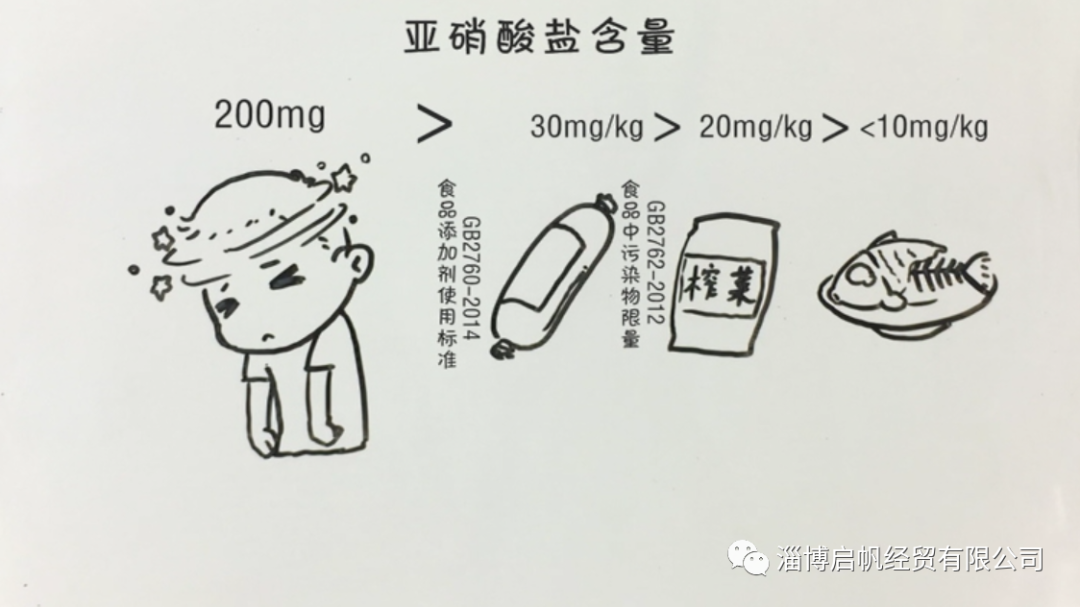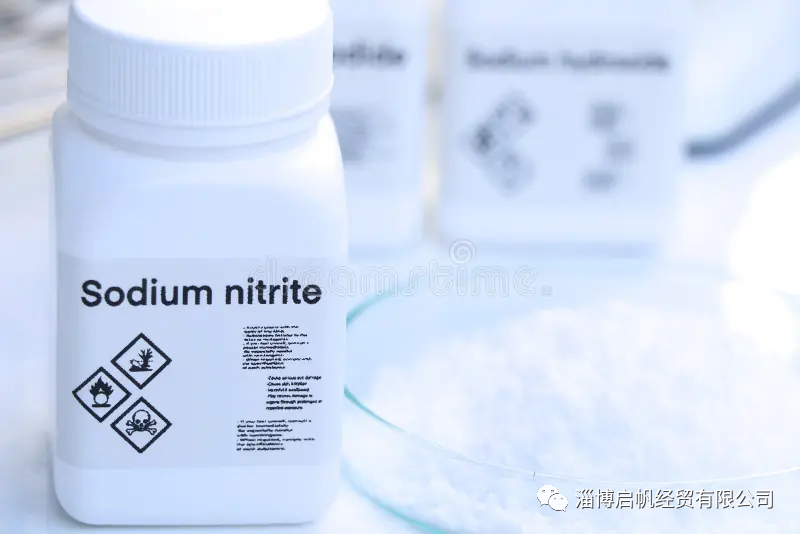Pure sodium nitrite is a white to light yellow crystal. It has very good water solubility and hygroscopic property, the aqueous solution is weakly alkaline, pH is about 9, easily soluble in liquid ammonia, slightly soluble in ethanol, methanol, ether and other organic solvents. Sodium nitrite has a salty taste and is used to make fake salt. In the air, sodium nitrite is slowly oxidized to sodium nitrate (NaNO3), which is a strong oxidizing agent. Sodium nitrite is prone to explosion in contact with organic matter. Sodium nitrite is also used in the production of diazo dyes, nitroso compounds and other organic compounds; Dyeing and bleaching of textile fibers; Take photos; As an anti-corrosion agent in the laboratory; As an additive in metal coatings; Production of rubber. Its 10% aqueous solution is also used in electroplating. Sodium nitrite is also used in vasodilating, bronchodilating drugs for humans and animals, and can even be used to detoxify cyanide.

Diet
Nitrites are a necessary part of the average person's daily diet and are found in many vegetables. In 34 samples of vegetables, including different types of cabbage, lettuce, spinach, cilantro and radishes, nitrite levels typically ranged from 1.1 to 57 mg/kg, which may cause nitrate loss during the cooking of vegetables, but nitrite loss was not significant. Raw meat contains 0.4-0.5 mg/kg nitrites and 4-7 mg/kg nitrates, while cured meat contains 10-30 mg/kg nitrates. The metabolite of nitrite in animal tissues is usually an important neurotransmitter nitric oxide. Nitric oxide can initially be produced by arginine through nitric oxide synthase or from nitrate and nitrite absorbed by digestion. Early studies on the negative effects of nitrite on the human body made people realize the important position of nitric oxide in human metabolism in advance, and know that the human body itself will produce nitric oxide.

Food additives
As a food additive, sodium nitrite can not only stain and preserve fish and meat foods, the principle is: nitrite decomposition under acidic conditions to produce nitroso (NO), nitroso will quickly react with myoglobin to produce stable, bright, bright red nitroso myoglobin. Gives meat products a steady bright red color. Therefore, it is especially suitable for lunch meat, ham sausage, etc., and canned braised meat, canned stewed pork, stewed elbow and other meat products use natural color, generally do not add sodium nitrite as a color agent. The INS number of sodium nitrite is 250, so some food labels indicate the use of 250 additives, which is a taboo name for sodium nitrite.

Sodium nitrite can also inhibit the growth of botulinum. The latter can produce botulinum toxin, which can cause food poisoning. Under EU standards, sodium nitrite can only be mixed with food salt in a content of no more than 0.6%, and its E code is E250. The standard for potassium nitrite is similar.
This compound can inhibit bacterial growth, and correspondingly, at relatively high levels it is also significantly toxic to animals, including humans. The median lethal dose of sodium nitrite in mice is 180 mg/kg, and the lowest known lethal dose in humans is 71 mg/kg, meaning that a person weighing 65 kg can be killed by as little as 4.615g of this substance. To avoid ingestion, sodium chloride mixed with sodium nitrite (which is used for non-dietary purposes) is often dyed a light red color.

Medicinal
Recent studies have shown that sodium nitrite has a significant effect on dilating blood vessels and improving blood circulation, including prospects for sickle cell disease, cyanide poisoning, myocardial infarction, brain aneurysms, and pulmonary hypertension, some of which can currently lead to infant death. Intravenous sodium nitrite is now used as a first aid for cyanide poisoning.

Chemical application
Sodium nitrite is used for the conversion of amines to diazo compounds, and the N2 group has good disposability to replace amino groups in production applications by such a reaction. In the laboratory, sodium nitrite is also used to treat excess sodium azide.
In industrial production, the use of sodium nitrite is very common, such as antifreeze, rust resistance, early strength, these are very common in construction projects, but it should be noted that sodium nitrite is after all industrial chemicals, in the use of storage must be in accordance with safety standards to operate and preserve.
If you have sodium nitrite procurement needs, please contact us.
This Article Records 1 Page



